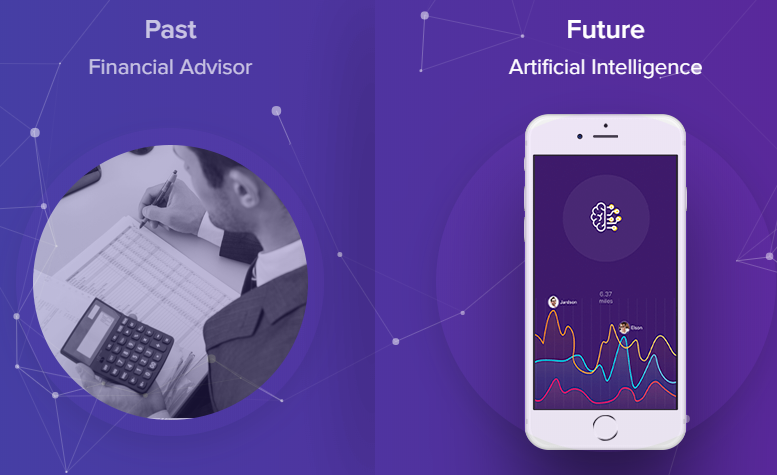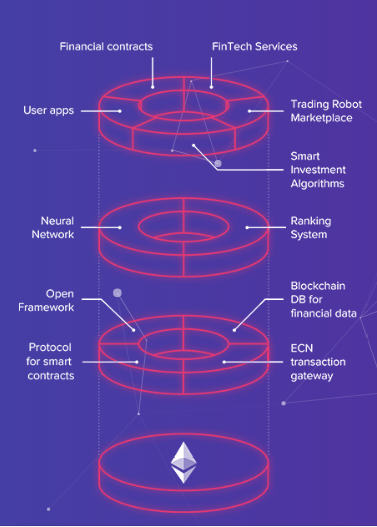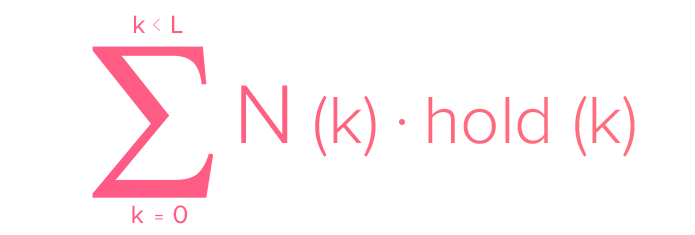HyperQuant - Blockchain is a new standard for automatic investment

In times of financial instability and turmoil, only wise portfolio management can protect capital from high inflation. Contemporary centralized financial systems have several disadvantages, namely closed structure and lack of transparency, inferior control when transferring funds to management, dependence on teams that manage capital, and a limited range of strategies used.

The creation of blockchain technology has created new markets where blockchain technology can solve problems from centralized systems. However, it also has its own problems, namely the price of cryptocurrency and altcoin is too volatile, the majority of token holders cannot manage risk skillfully, there are many unreliable coins and altcoins, and many cryptocurrency exchanges with limited liquidity. HyperQuant has prepared a solution to overcome this.

WHAT IS HyperQuant
? HyperQuant Blockchain is a platform for automatic investment. With HyperQuant, the investment process is more simple and transparent for all market participants, from small investors, large investors, to professional capital managers. HyperQuant is a platform dedicated to the creation of highly effective decentralized financial services. This platform provides new opportunities for software developers and algorithmic trading by providing a quantitative framework that is strengthened by the latest risk management and blockchain AI technology that ensures system stability and reliability. HyperQuant applies the intelligent contract realization mechanism. The HyperQuant system provides utilities for the creation and development of algorithmic trading solutions. AI manages a ranking system and artificial intelligence that allows it to manage various elements of the platform. The HyperQuant application contains services and solutions for retail and corporate system users.

The HyperQuant ecosystem is not only a financial tool that is very much needed today, but also a new place aimed at global distribution. Advanced AI-based technology is growing rapidly and developing lately.
HyperQuant's unique feature is the interaction between AI, blockchain technology, and users. This gives users the opportunity to create new products and entities for the platform, such as configuring Megabot, an automated trading system portfolio. Users create their portfolios that contain configuration parameters, bot identification numbers, and other system data needed to add up to the value of the new entity itself to be a balanced solution.

HOW DOES HyperQuant WORK?
The HyperQuant business model is based on an innovative approach that determines what is important and necessary for users. The concept of this business model relies on identifying high profit zones, determining methods for gaining market share and ensuring protection from competitors. HyperQuant ecosystem creates an architecture that allows it to transform pioneering technology into actual economic value. Services created in the HyperQuant ecosystem have great potential for growth.
HyperQuant uses trading robots to complete trading operations on financial markets with a set of algorithms. Trading with the help of algorithmic systems has several advantages: to make decisions at maximum speed and to complete trading tasks at speeds that are not available to humans, automatically processing market data and generating trading signals, and the
accuracy of trading signal processing makes it possible to prevent errors with request settings market.
Trading robots work strictly in accordance with established algorithms and complete trading operations without emotion and can manage several thousand securities simultaneously. Cryptocurrency traders and token holders are vulnerable to emotions that cause irrational decisions. Trading strategies apply to any market, with any assets and at any time. Algorithms are carefully typed and have no risk of making wrong decisions because of uncertainty, anger, fear, and dissatisfaction. The basis of the algorithm is in the division of strategy classes.
The trading strategy and model has several classifications, namely as follows:
1. Trend Following Strategy: The main objective of this strategy is to find a favorable price level to complete a trading operation with the aim of maintaining a profitable position in the longest period of time. The trend-following strategy seeks to capture large fluctuations in financial instruments. Trending strategies based on technical indicators are the most popular strategies. Technical indicators are functions based on indicator values of statistical exchanges, for example, the price of traded instruments. The rules for opening and closing positions in this strategy are shaped by the derivation of indicators and the comparison of the calculated values between themselves and the market value.
2. Counter-Trend Strategy: that is a strategy based on expectations of significant price movements and consequent positions that open in the opposite direction. The assumption is that the price will return to its average value. Counter-trend strategies are often attractive to trade because the goal is to buy at the lowest price and sell at the highest price.
3. Pattern Recognition Strategy: The purpose of this strategy is to classify objects in various categories. Image recognition task in distributing new objects that can be identified to a particular class. This kind of strategy uses neural networks as a basis for education and is widely used for recognition of candlestick patterns. Candlestick patterns are certain combinations of candlesticks. There are many candlestick models and assumptions about continuing or reverse price movements occur based on the appearance of candlestick models. These assumptions are strategies based on the introduction of technical analysis.
4. Arbitration Strategy: There are various types of Arbitration strategies namely Cross-market Arbitration and Statistical Arbitration.
5. Strategies based on machine learning: The basis of machine learning is the modeling of historical data and the use of models to estimate prices in the future. One type of machine learning is classification.
Based on the above strategy, HyperQuant made a strategy with the Si Technologies Algorithm. The strategy of the Si Technologies Algorithm from HyperQuant is as follows:
* Smart order execution
strategy This strategy class is based on work with an order. HyperQuant software makes it possible to make strategies citing dynamically depending on specific tasks.
It is impossible to execute orders with the same price first, all trades will be at the desired price, but gradually the price will be less profitable. To reduce costs, institutional clients need to use the Smart Order execution strategy. Large market order execution can be divided into several steps and involves a combination of various strategies. HyperQuant platform users will be able to configure various specific fields of quotation strategies, namely Instrument, Volume, Minimum volume, Maximum volume, Maximum BBO distance, Internal quotation levels, Internal quotation levels, Hedging, Hedging types and Hedging settings.
* Market Making Algorithms
Market execution algorithm execution leads to a boost in liquidity of trading instruments. This also results in lower volatility of trading instruments. Providing liquidity is very important for the development of the trade industry. The mechanism for supplying liquidity is widespread in the largest stock markets such as NYSE, NASDAQ and CME. Market makers must support two-way quotes in orderbook and comply with some minimum citation period requirements and the volume of all buy and sell orders according to market maker data.
* Risk Management
Risk management is the process of adopting and fulfilling complex actions that aim to reduce the likelihood of unfavorable outcomes and minimize the possibility of loss. Every trading and investment activity poses certain risks. The risk in this case is the possibility of unexpected financial loss in an uncertain environment. Every trader faces market risk, namely the possibility of changes in asset prices due to fluctuations in market rates. There are other risks that are rarely known, namely operational, functional, selective and liquidity risks.
* Hedging
Hedging can be divided into Selling Hedge and Buying Hedge. Buying Hedge is used when traders plan to buy assets in the future and try to reduce the risks associated with price increases. Selling hedge is used in the case of sales in commodity markets to hedge the risk of future price falls, and implies that the seller sets a fixed price for himself.
* AI-based Financial Advisers
The majority of investments fail because of wrong risk management and inadequate control by users. To solve this problem, HyperQuant uses artificial intelligence based on data collected from HyperQuant platform users.
* Blockchain based on Smart Contract Protocol
The HyperQuant team developed an integrated protocol with standard settings for a portfolio of algorithmic strategies, implemented as a Smart Contract.

TOKEN HyperQuant

HyperQuant issues utility tokens to create an internal economy within the platform ecosystem. By issuing HyperQuant tokens (HQT), HyperQuant offers all users the opportunity to be the creators of a revolutionary platform, enabling them to manage their capital efficiently. Each HQT Token holder will get various levels of access to products and solutions based on the HyperQuant platform. The level of access and features available from certain products will be determined by the number of tokens they have. The economic value of human business is reflected through the creation of an entity developer on a platform (such as a trading robot).
The total number of tokens that are held that keep the bot running:

Where:
* L = maximum bot level
* N (k) = number of bots k-level on the current platform
* hold (k) = number of tokens needed to maintain bot k-single level running
Developer receives benefits from providing data, indicators, and signal to the platform. This approach to giving incentives to developers will stimulate that they not only create quality entities but also to change and improve them.
Certain steps are being taken to reduce risk when acquiring new platform entities. The user must be fully informed of the entity's property and related potential risks. This platform also protects users' interests by offering a leveled payment system. In other words, it provides full functionality with a limited amount of funds, thus turning it into a classic software demo mode.

This is information about HyperQuant, for further information please visit the link below:
Website | White book | Telegram | Facebook | Twitter | Medium | ANN Tapak
Komentar
Posting Komentar